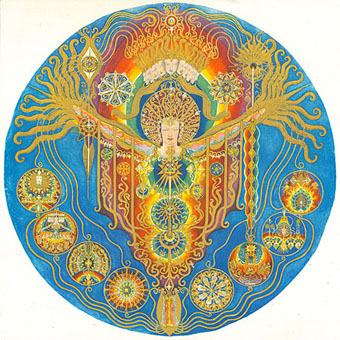
Fountain (1917) by R. Mutt (Marcel Duchamp), and God (1917) by Elsa von Freytag-Loringhoven.
• “What is there left to know about David Bowie? What is there left to unearth?” asks Ian Penman whose lengthy review of recent Bowie books is better by far than a shelf full of cash-in doorstops.
• Strázci z hlubin casu is a collection of stories by HP Lovecraft and August Derleth from Czech publisher Volvox Globator. The book reprints artwork of mine on the cover and inside.
• Mixes of the week: Through December by David Colohan, At Alien Altars: A Conjurer’s Hexmas by Seraphic Manta, and Secret Thirteen Mix 204 by James Welburn.
• “Something vindictive resides in soot.” Timothy Jarvis on the weird fiction of Stefan Grabinski. From 2003: China Miéville on Grabinski.
• Paintings by Jakub Rozalski of eastern European peasants with mechas and werewolves.
• Colm Tóibín on James Joyce’s A Portrait of the Artist as a Young Man, 100 years on.
• Jesse Singal on why straight rural men (in the USA) have “bud-sex” with each other.
• Mark Valentine recommends books on tasseography, or divination by tea leaves.
• “Northampton Calling: A Conversation with Alan Moore,” by Rob Vollmar.
• Bill Schutt at Scientific American asks what human flesh tastes like.
• Gwendolyn Nix on the Tritone, aka The Devil’s Musical Interval.
• At Dennis Cooper’s: _Black_Acrylic presents…Penda’s Fen Day.
• The latest Buddha Machine from FM3 is Philip Glass-themed.
• Listen to The Wire’s top 50 releases of 2016
• Tritone (Musica Diablo) (1980) by Tuxedomoon | Diabolus In Musica (1987) by The Foetus All Nude Review | Tritone (Musica Diablo) (2016) by Aksak Maboul




